Click on images to enlarge
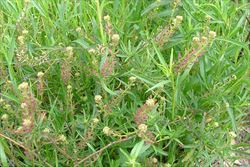
infestation (Photo: Sheldon Navie)

habit prior to flowering (Photo: Sheldon Navie)
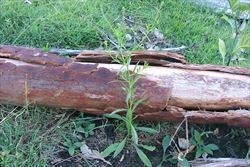
habit in flower (Photo: Sheldon Navie)

lower leaves (Photo: Sheldon Navie)
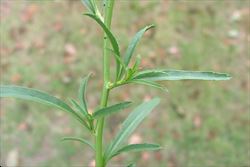
close-up of stem and smaller upper leaves (Photo: Sheldon Navie)
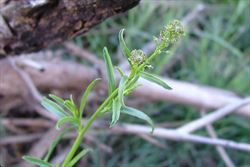
inconspicuous flowers (Photo: Sheldon Navie)

close-up of flowers and young fruit (Photo: Sheldon Navie)
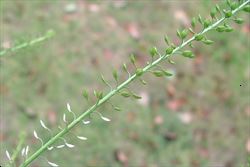
immature and mature fruit (Photo: Sheldon Navie)
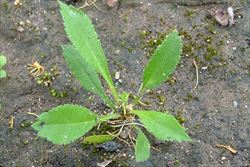
seedling (Photo: Sheldon Navie)
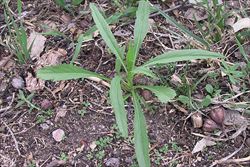
young plant (Photo: Jackie Miles and Max Campbell)
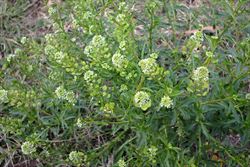
the similar Virginian peppercress (Lepidium virginicum), with more conspicuous white flowers (Photo: Sheldon Navie)
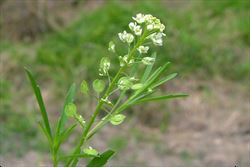
close-up of the flowers and immature fruit of Virginian peppercress, Lepidium virginicum (Photo: Sheldon Navie)
Scientific Name
Lepidium africanum (Burm. f.) DC.
Synonyms
Thlaspi africanus Burm. f.
Family
Brassicaceae (Queensland, New South Wales, the ACT, Victoria, Tasmania, Western Australia and the Northern Territory).Cruciferae (South Australia)
Common Names
African pepperwort, birdseed, Cape peppercress, common pepper-cress, common peppercress, field cress, pepper cress, peppercress, peppergrass, pepperweed, pepperwort, rubble peppercress, tongue grass
Origin
Native to southern Africa.
Naturalised Distribution
A very widely naturalised species that is mainly found throughout the southern and eastern parts of Australia. It is very common in southern Queensland, New South Wales, Victoria, the ACT, south-eastern South Australia and south-western Western Australia. Also relatively common or occasionally naturalised in central and northern Queensland, Tasmania, in other parts of South Australia and Western Australia, in the southern parts of the Northern Territory, and on Lord Howe Island.
Notes
Common peppercress (Lepidium africanum) is regarded as an environmental weed in Victoria and as a potential environmental weed in Western Australia and the Northern Territory. This species is a common weed of agricultural areas and habitation (i.e. crops, pastures, lawns, gardens, footpaths, parks, roadsides, disturbed sites and waste areas). However, it also invades open woodlands, grasslands and wetlands in some parts of the country.
Common peppercress (Lepidium africanum) is currently of most concern in Victoria, where it is regarded as a potential threat to one or more vegetation communities. It is a common weed of grassy woodlands and plains grasslands in some parts of the state, including in numerous conservation areas (e.g. Wanurp Nature Conservation Reserve, Yarra Bend Park, Roslynmead Nature Conservation Reserve, Organ Pipes National Park and Brisbane Ranges National Park).
This species is a common weed of buloke (Allocasuarina luehmannii) woodlands, an endangered ecological community found in some parts of western Victoria and south-western New South Wales. This plant community is itself an important source of food for the endangered south-eastern red-tailed black cockatoo (Calyptorhynchus banksii graptogyne) in western Victoria.
Common peppercress (Lepidium africanum) is also a weed of woodlands in other parts of New South Wales, a weed of wastelands and road verges from Geraldton to Esperance in south-western Western Australia, and a potential weed of arid wetlands in the southern parts of the Northern Territory. It has also been recorded in conservation areas in South Australia (i.e. Angove Conservation Park, Scott Creek Conservation Park and Anstey Hill Recreation Park) and New South Wales (i.e. Irrawong Reserve).

